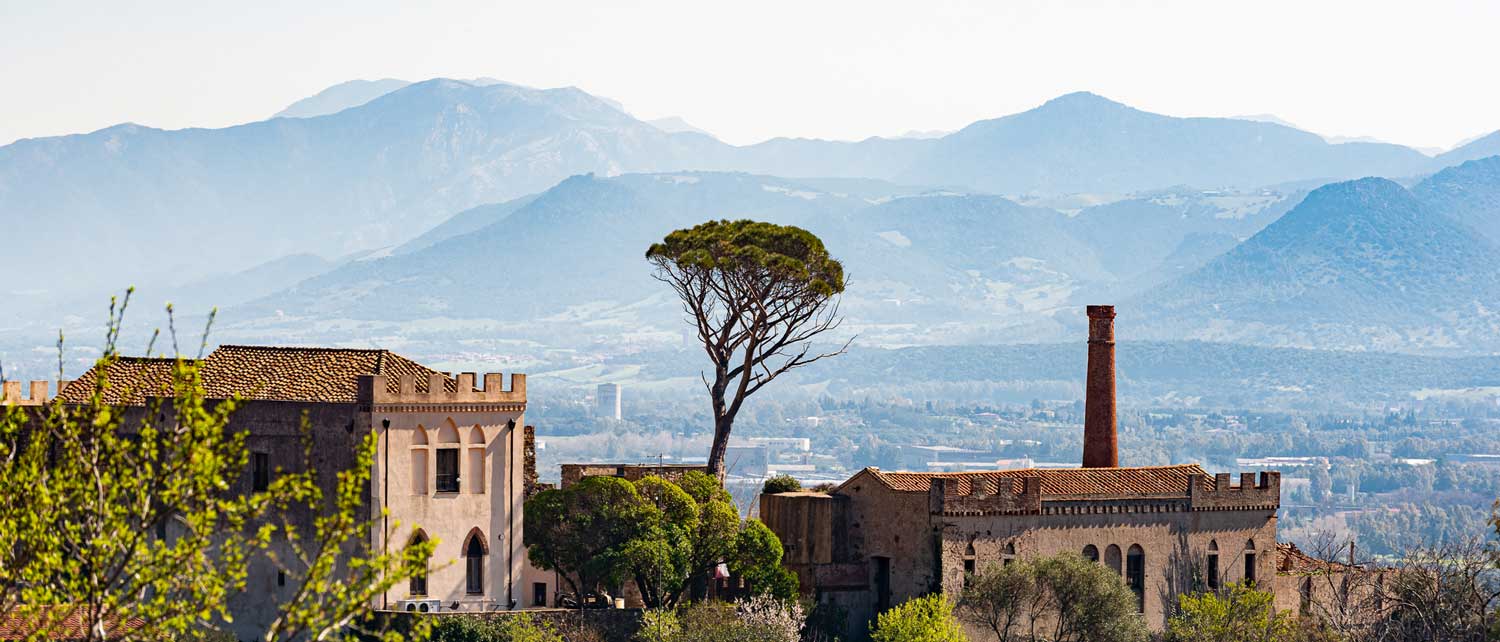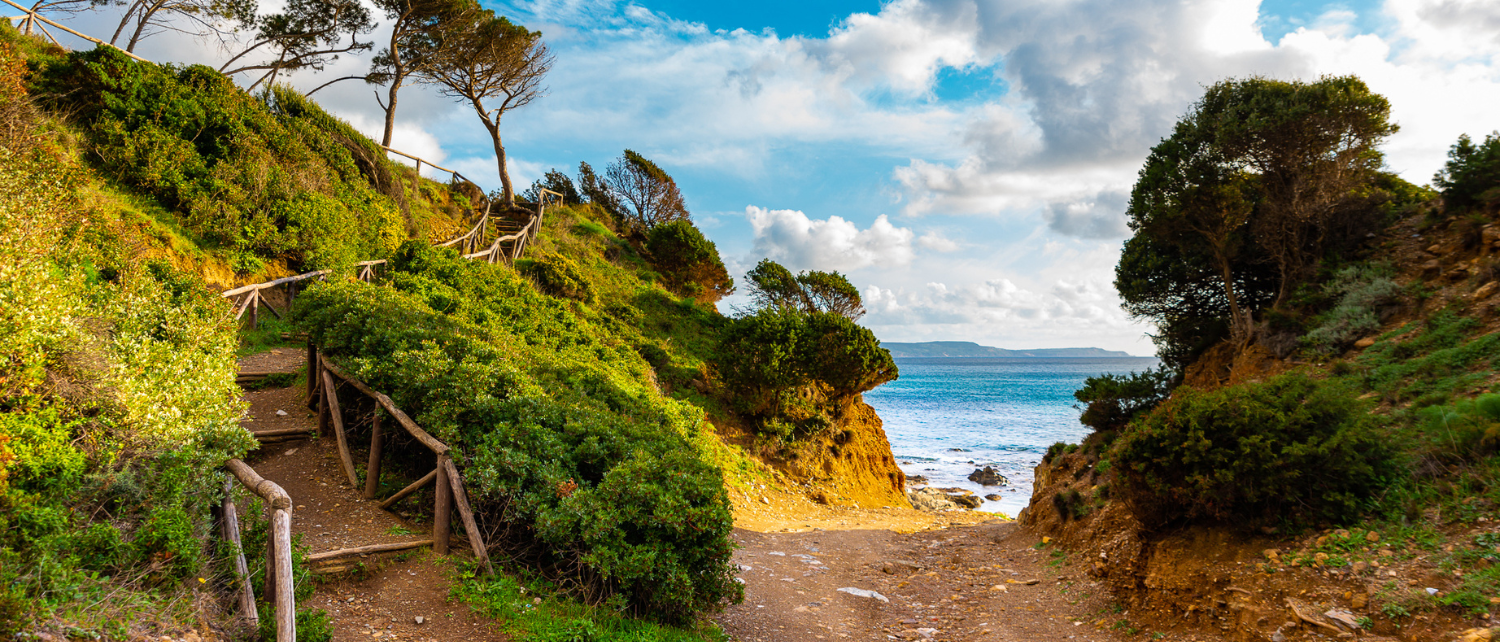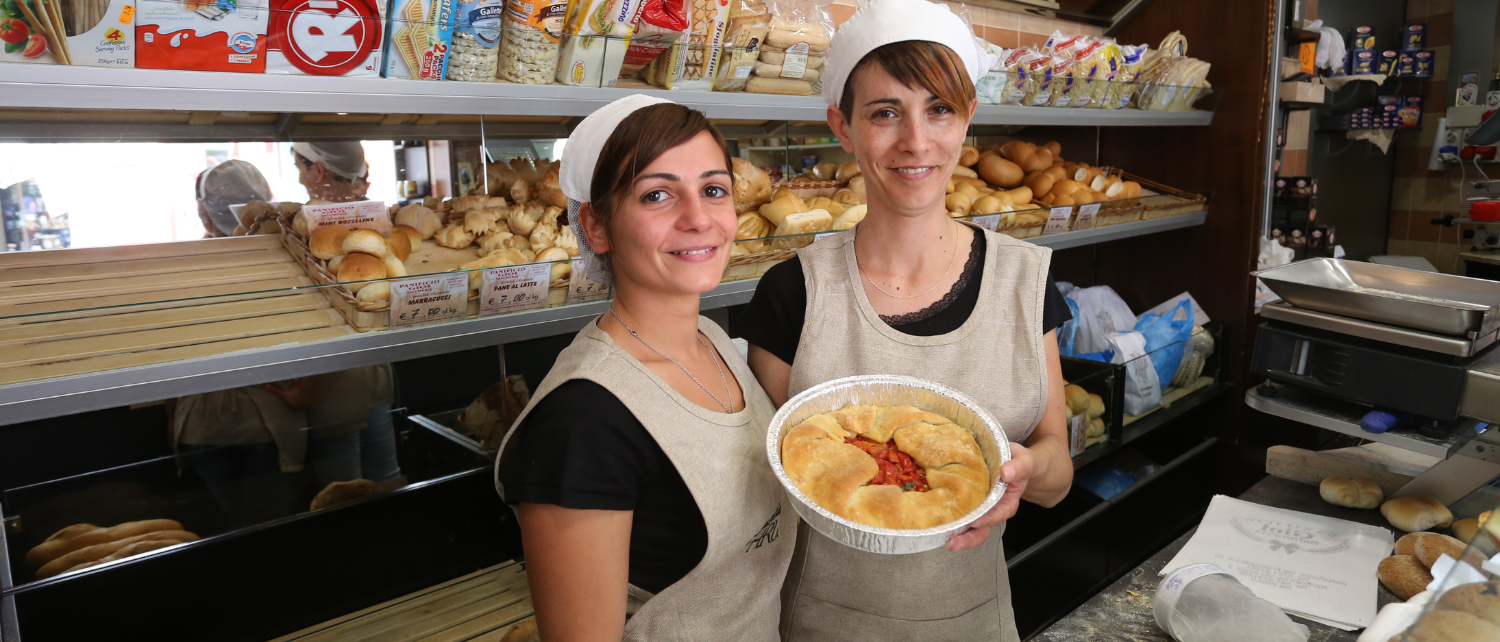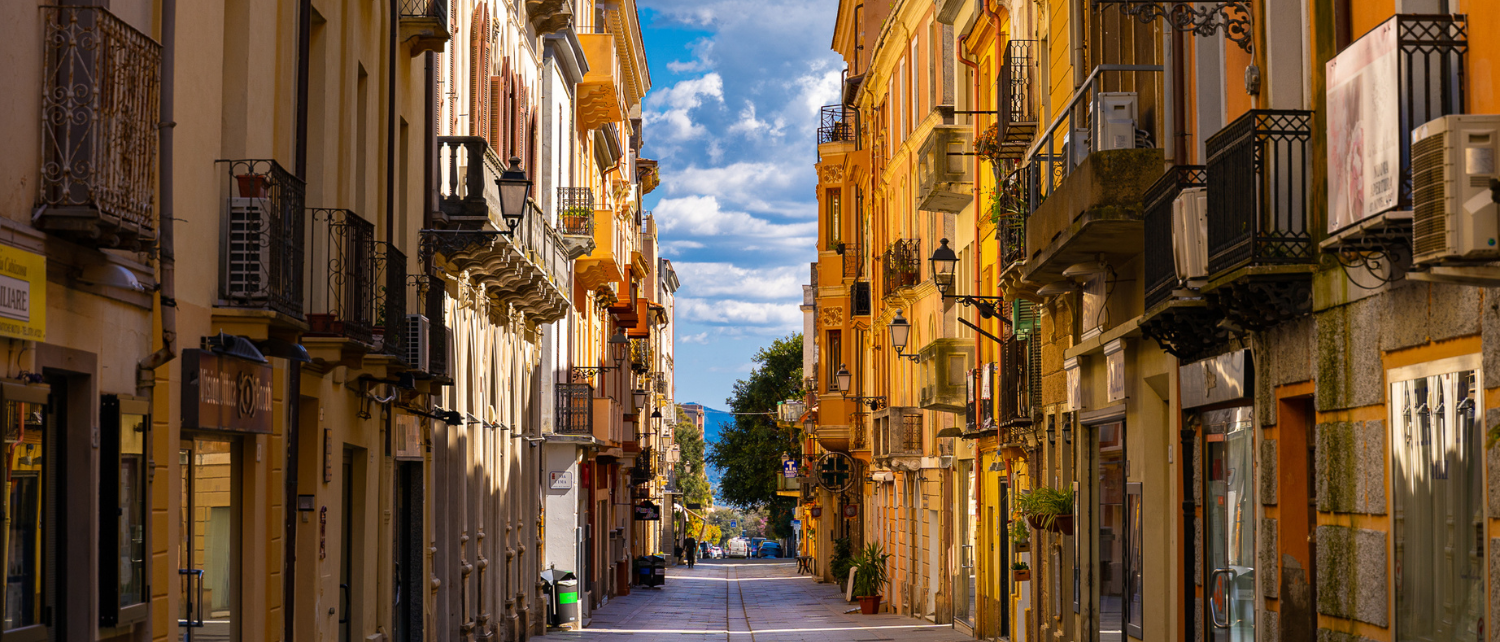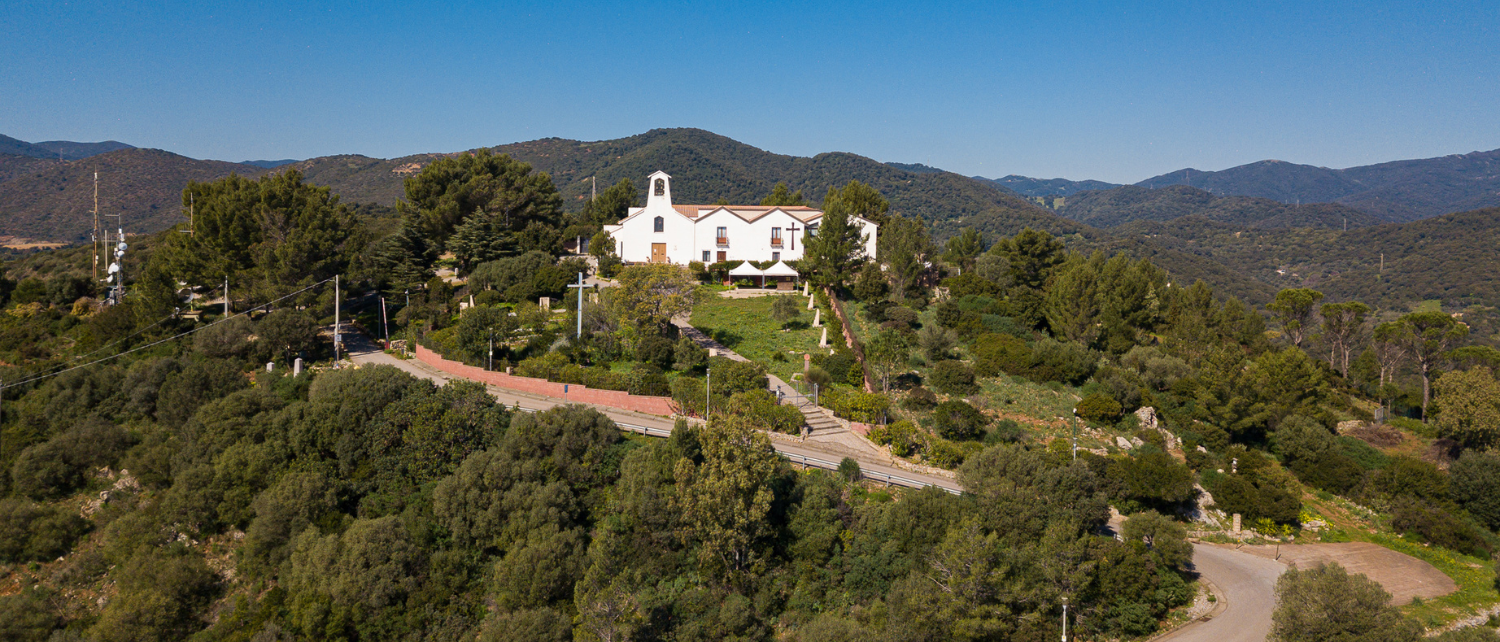On the southwestern coast of Sardinia, located on top of the hills close to the Cixerri valley, lies the town of Iglesias. Beaches, hills, green valleys, and the Parco Geominerario Storico Ambientale Della Sardegna (Historical and Environmental Geominerary Park) that preserves the entire history of human mining activity, from its origins to the most modern technologies.
It is above all its history, architectural heritage, ancient testimonies of the Middle Ages, the many reminiscences of Spanish domination, and its churches that captivate and capture the attention of even the most demanding traveler, who love history and archeology.
Here, the charm of the origins is preserved by medieval churches in which the signs of a glorious past are stratified, that of a city formerly called Villa di Chiesa. This name originates, it seems, from the large number of places of worship that were built in the Middle Ages. Moreover, it is precisely the large number of ancient and modern places of worship that still characterize the urban fabric of the current city.

6000 – 750 BC. The territory of Iglesias was inhabited since ancient times, as remarked by the extensive outdoor settlements on the hills surrounding the city: Cruccueddu, Buoncammino, Monte Altari, Pizzu ‘e Pudda. The ancient Copper Age is documented in the domus de Janas of San Benedetto and in the village of Via San Leonardo.
750 BC – 476 AD. Phoenicians, Carthaginians, and Romans, attracted by the mineral resource,, occupied the coastal areas. The Carthaginians erected the temple of Matzanni in white travertine on the slopes of Mount Cuccurdoni Mannu on the administrative island of San Marco. The settlement of Corongiu, the Canonica bridge, and the nearby arcosolium tomb of Monte Pitzuga date back to the Roman period.
476 – 1258 With the Vandal conquest (456 – 534 AD), the sending of a colony of Maurusi to the Southwest determined the imposition of the name Maurreddìa on the region and Maurreddus on its inhabitants. The seat of the Sulcitana diocese, first located in Sant’Antioco and then, in the XIII century, in Tratalias, was transferred to Villa di Chiesa between 1355 and 1362. The ruins of numerous churches belong to the late Byzantine period. Within the walls, the churches of Santissimo Salvatore, Sant’Antonio Abate, and San Saturno (now Madonna delle Grazie) are noteworthy.

13th century. In the Cixerri valley, which was progressively populated by scattered villages, Ugolino della Gherardesca, Count of Donoratico and Lord of the sixth part of Cagliari, founded the town of Villa di Chiesa, mentioned for the first time in a document from 1272. The territory, rich in lead-silver and therefore also known as Argentaria, saw a revival of mining activity. In a short period of time, Villa di Chiesa developed, manifesting the need for a statute that regulated both city life and the extractive activity of nearby mines: the Breve di Villa di Chiesa. The Pisan period was an exceptional phase in the history of Iglesias, which became the most important center in southern Sardinia after Cagliari.
1323 In June 1323, Iberian militias landed in Palma di Sulcis and headed directly for Villa di Chiesa which, after a long siege, was forced to surrender on February 7th, 1324, obtaining the right to honorably lay down arms. Thus began the period of Catalan-Aragonese domination. Five days after the occupation, the infant Alfonso granted the city the privilege of minting silver coins and, in 1327, approved and confirmed the Breve di Villa di Chiesa. In April 1354, the city was burned and destroyed during the war against Mariano d’Arborea, who succeeded in seizing it. Once in possession of the city, Peter IV of Aragon ordered the reorganization of the walls. However, the situation remained confused and agitated due to the continuous reignition of conflicts between the Crown of Aragon and the Giudicato of Arborea. Struggles and destruction caused a standstill in economic activity.
1479 Sardinia passed to Spain without bringing about any changes. Inept Spanish rule and the plagues of the 1600s had a heavy impact on the territory and the mines were abandoned.
1720 Only in the 18th century, when the Island became part of the Kingdom of Sardinia, did interest in mining activity revive. In the second half of the 19th century, due to the exploration and extraction of various minerals, a numerous and competent workforce was created, and the facilities and equipment were perfected. In addition, new companies were born. In a few decades, with the mining industry, Sardinia managed to conquer an internationally significant position, including Iglesias. The population reached twenty thousand inhabitants.
1900 The crisis in the agricultural sector at the beginning of the 20th century brought around 16,000 workers to Iglesias, and almost all of them were employed in the mines. The exploitative and miserable working conditions of the workers caused accidents and clashes. On May 11, 1920, strikers in Iglesias clashed with Carabinieri and royal guards. Seven people were killed and twenty-six were injured. During the fascist period, with the autarchic policy, the mines received a new and significant boost, especially for the coal exploitation in Sulcis. However, Sardinian coal, difficult to extract and of poor quality, could not withstand the competition from coal produced by other countries for long. In the last decades of the 20th century, Sardinian mines had taken on a position of inferiority in the global market. The continuing depression of lead-zinc prices, the progressive impoverishment of deposits, and the enormous financial effort required led to the cessation of all mining activities.
Today Iglesias is a new city. The hopes and energies of the area are focused on increasing the economy with new activities related to the tourism and hotel industry, in which the mining structures are considered jewels of industrial archaeology and find suitable placement.



